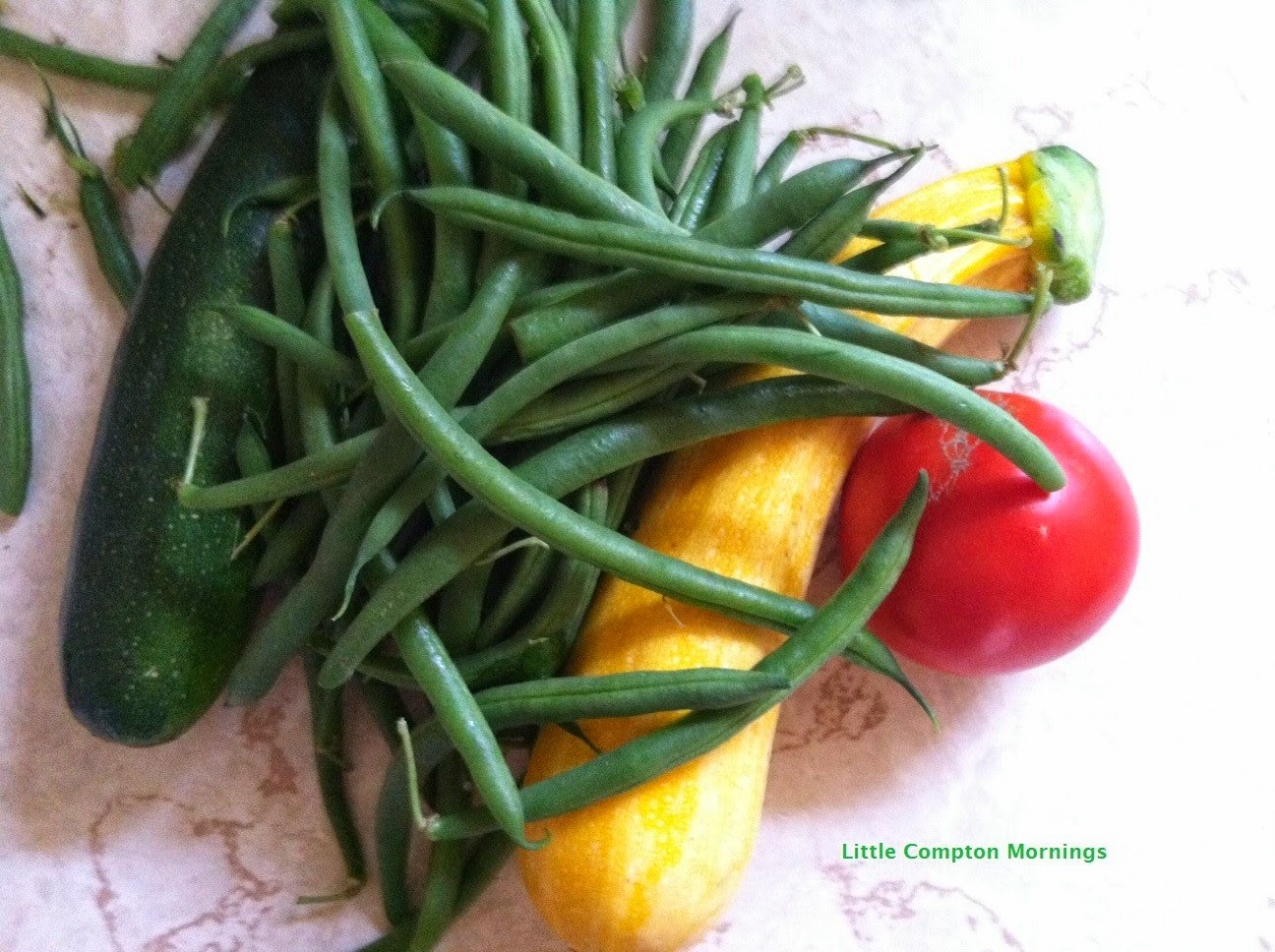No, not a typo. I recently had friends over for the last
largish meal I made before leaving Rhode Island to return to my desert home for
the academic year, and realized that, without even trying, every single thing
we ate was locally produced. On an island
(Conanicut, otherwise known as Jamestown).
Don’t you just love that?
It was hot in the morning, and the forecast was for
thunderstorms. My friends don’t care for the heat. And my cottage is little
and, of course, doesn’t have air conditioning. So I decided to make a dinner
that I could cook before the rain and serve at room temperature. What a great
excuse: that’s actually one of my favorite ways to eat.
My friend Wayne (source of the
mussels)
had called me up and offered me some fresh-caught Bluefin tuna “head steaks”; I
learned that this was the meat right behind the head that was cut off in
preparing a giant tuna to be sold. My friends may not like the heat, but I knew
they liked tuna, so of course I said yes.
Wayne swung off the bridge to drop me the fish on his way out to another
fish-spotting gig.

Now, Jamestown has a surprising amount of meat and poultry
for such a tiny place:
grassfed
beef, pasteured pork, chicken, and lamb.
And your usual lot of summer vegetables, plus the early gift of
fresh-dug
potatoes. Surprisingly, tomatoes were early this year. Surprising because
of the brutal winter—did that do something to speed them up?—and just because.
I usually have to return to school before the really nice tomatoes are in—and
these are field tomatoes we’re talking here, beautiful in early August.The meat
and produce are from
Windmist Farm,and
Hodgkiss Farm.

So here is the menu, with some pictures of ingredients. While I made a very satisfying visit yesterday to
our own impressive farmer’s market here in Tucson, I have to say, to paraphrase
Dorothy, there’s no place like New England.
A Jamestown Dinner
Dinner for Friends on a Muggy Day Threatening
Thunderstorms
Tuna Tartare on potato chips
Figs with goat cheese sweetened with honey and fresh thyme

Everything-grilled salad of chicken, beef, onions, peppers, yellow
and zucchini squash, and corn (see
this
post)
Green beans marinated with olive oil and fresh oregano
Tomato and mozzarella (from Narragansett Creamery) salad
Organic Blueberries and Peaches with Maple Sour Cream
 Now, Jamestown has a surprising amount of meat and poultry
for such a tiny place: grassfed
beef, pasteured pork, chicken, and lamb.
And your usual lot of summer vegetables, plus the early gift of fresh-dug
potatoes. Surprisingly, tomatoes were early this year. Surprising because
of the brutal winter—did that do something to speed them up?—and just because.
I usually have to return to school before the really nice tomatoes are in—and
these are field tomatoes we’re talking here, beautiful in early August.The meat
and produce are from Windmist Farm,and
Hodgkiss Farm.
Now, Jamestown has a surprising amount of meat and poultry
for such a tiny place: grassfed
beef, pasteured pork, chicken, and lamb.
And your usual lot of summer vegetables, plus the early gift of fresh-dug
potatoes. Surprisingly, tomatoes were early this year. Surprising because
of the brutal winter—did that do something to speed them up?—and just because.
I usually have to return to school before the really nice tomatoes are in—and
these are field tomatoes we’re talking here, beautiful in early August.The meat
and produce are from Windmist Farm,and
Hodgkiss Farm. So here is the menu, with some pictures of ingredients. While I made a very satisfying visit yesterday to
our own impressive farmer’s market here in Tucson, I have to say, to paraphrase
Dorothy, there’s no place like New England.
So here is the menu, with some pictures of ingredients. While I made a very satisfying visit yesterday to
our own impressive farmer’s market here in Tucson, I have to say, to paraphrase
Dorothy, there’s no place like New England. Everything-grilled salad of chicken, beef, onions, peppers, yellow
and zucchini squash, and corn (see this
post)
Everything-grilled salad of chicken, beef, onions, peppers, yellow
and zucchini squash, and corn (see this
post)






